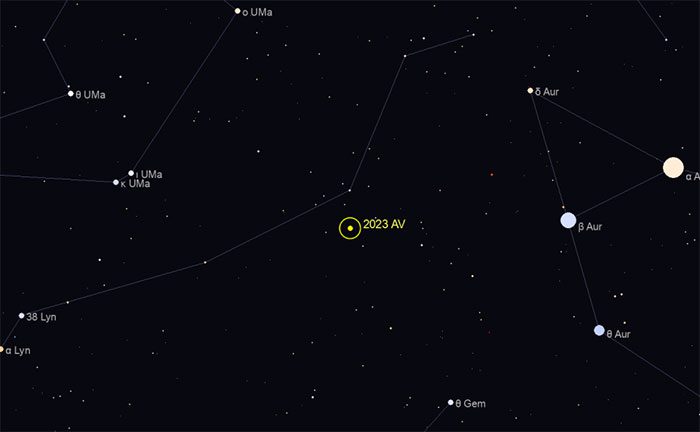The discovery of asteroid 2023 AV on January 13 is a significant achievement of the Catalina Sky Survey project in the United States. This asteroid flew past Earth at a distance of 9,180 km and was detected by one of the project’s observational instruments.

Illustration of an asteroid approaching Earth.
The geostationary orbit, where many communication satellites operate, is situated over 35,000 km above Earth. This means that asteroid 2023 AV came even closer to Earth than many satellites. The object passed over the Atlantic Ocean, near the French Guiana region.
Measuring 2 to 5 meters wide, 2023 AV is relatively small and does not pose a threat according to asteroid and near-Earth object standards. If an asteroid of this size were to collide with Earth, similar to some past events, it is highly likely that it would burn up in the atmosphere. This ensures safety for humans while creating a spectacular “fireball” in the sky.
For example, the Chelyabinsk meteor that exploded over Russia in 2013 was about ten times larger than 2023 AV, yet only a small fragment the size of a stone managed to reach the ground.
2023 AV is the first asteroid to pass by Earth at a distance closer than the Moon in 2023. It is also the 17th close approach of an asteroid since 1901. Another slightly larger asteroid, 2023 AC1, also came closer to Earth than the Moon’s orbit just hours later, but at a distance of about 160,000 km from the planet’s surface.
Experts indicate that there is no need to worry about small asteroids like 2023 AV or 2023 AC1. The greater risk comes from larger objects that have not yet been detected, especially those approaching Earth from the direction of the Sun, in a region referred to as the “blind spot.” Upcoming missions, such as NASA’s NEO Surveyor space telescope, will provide new perspectives in space, helping humanity prepare better in case an asteroid heads our way.


















































